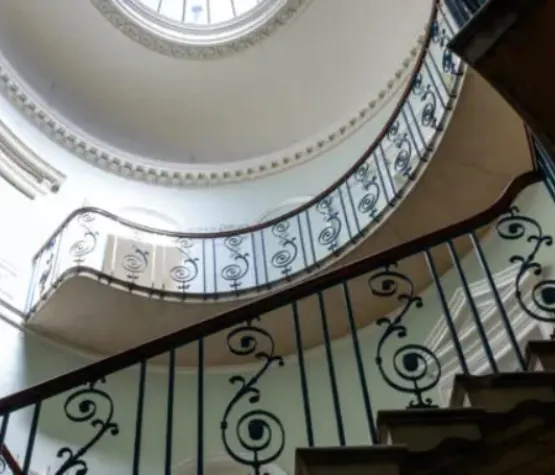Keeping your property in the best possible condition not only enhances its value – regular home maintenance is also a great way to safeguard against serious problems.
When you own a historic home, it’s a great idea to have a home maintenance checklist. Our expert advice below will help you create one tailored to your listed property.
From winter weather causing frozen pipes, to stormy summer days where tree branches can fall and cause damage to your historic building – there are things to consider that could save you a headache in the long run.
The better condition you keep your historic building in, the less likely you are to suffer issues that could have been prevented.
Home insurance rarely covers wear and tear, so it’s always important to keep your home in a good state to stop problems building up over time.
We’d advise using the following areas as a home maintenance checklist and to make yourself a maintenance schedule.
Your roof and chimneys
Keeping your roof in good condition prevents water damage from leaks, while maintaining your chimney stacks lessens the risk of a chimney fire.
Generally, you can get a good look at your roof from the ground, but you can use binoculars to take a closer look if necessary.
Regular checks on the following are advised:
Thatched roofs
Damp patches
Be on the lookout for any damp patches in and around your home. From the walls to the roof, a damp patch is usually a sign of a bigger issue in listed buildings.
Historic buildings require much maintenance as discussed throughout this article – and damp proofing/ catching leaks as early as possible is no exception to this.
It’s fair to say we get a lot of rain in the UK – and a leak can cause a lot of damage to a traditionally-built home. So, it’s important to ensure that water can always travel easily from your roof into drains and that there aren’t any blockages.
At Abode, we’d suggest regular maintenance and checks on the following:
Walls and woodwork
It’s always worth keeping an eye on structural features both inside and outside your home.
However your property is constructed, your walls, windows, and any joinery can be prone to damp. Finding areas of trapped moisture early could save you a headache.
Electrical systems
Electrical faults within your home can cause devastating fires. Whilst fire extinguishers and sprinkler heads in your listed property can minimise the damage a fire can cause, it’s always advisable to check your electrics regularly to reduce the risk of a fire starting.
From faulty switches and old appliances to frayed cords and ageing wiring, there are many ways an electrical fire can start. We’d recommend doing a regular condition survey of wires and electrical outlets and inviting a professional to do regular servicing.
Garden upkeep
You may not think that the condition of your garden directly relates to the health of your home, but unkept grounds can encourage pests in your garden which may in turn get into your home and cause further damage.
It’s also well worth keeping an eye on any greenery nearby your home. Make sure any climbing plants like wisteria and, particularly, ivy are not undermining the stonework.
Trees and branches that are at risk of falling during a storm should be removed before adverse weather hits.
When there’s maintenance work to be done, plan it sensibly. Remember to check if you need any permissions for the work and use the materials and techniques that are in keeping with the character of your home.
Prioritise the tasks that could save you most work in the long run, such as any damp proofing or roof repairs. It’s also important to keep ongoing records of your home, including its structure and contents and any important documents. These could be anything from photographs and drawings, to building surveys and repair specifications, to leases and blueprints – they will help support you in the ongoing preservation of your listed property, especially if you need to make a claim.
Aside from the advice above, the number one thing you can do to safeguard your home of historic interest is to secure a great insurance policy.
A specialist broker – like us at Abode – will know the intricacies of owning a listed property, and can ask you all the right questions to provide expert advice.
Your house will be one of the biggest investments you will make, especially when you own a listed building.
In the event of a claim, you will need to repair your property with like-for-like materials and methods – some of these materials and skillsets are not that easy to come across. Insuring with a non-specialist broker may mean these exceptions that come with living in a historic building are not accounted for.
The expert team at Abode is more than happy to help with any queries you may have and offer you professional advice. Please do not hesitate to contact us or you can call the team on 01622476433
